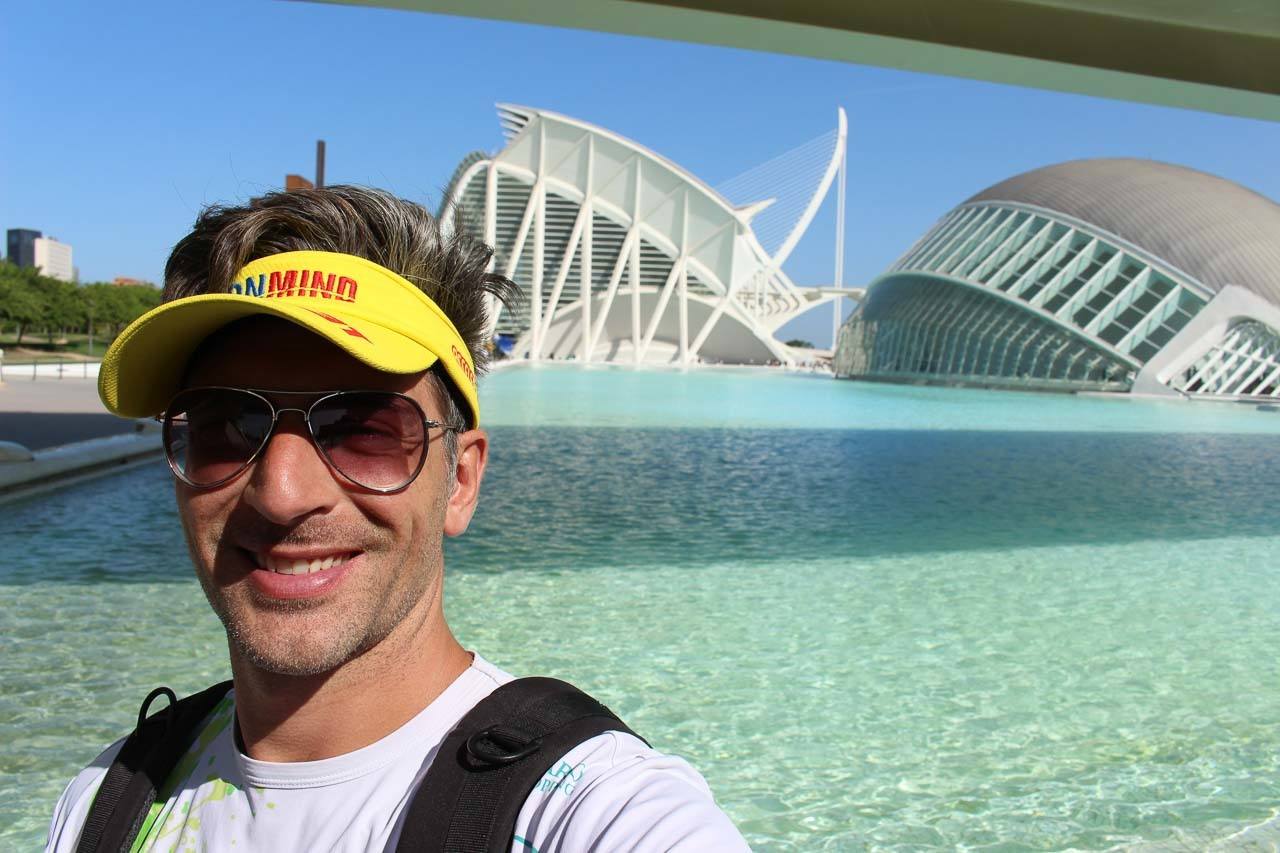17 Unmissable Things To Do In Phnom Penh, Cambodia
15 min read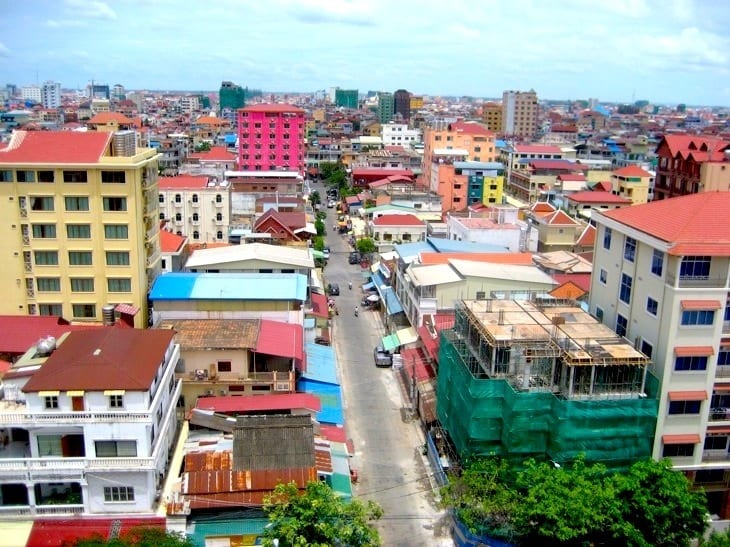
Table of Contents
Are you looking for things to do in Phnom Penh, Cambodia’s bustling capital city? Then gt ready for an unforgettable adventure!
Phnom Penh is a city that’s steeped in history and culture, with incredible food, stunning architecture, and bustling markets.
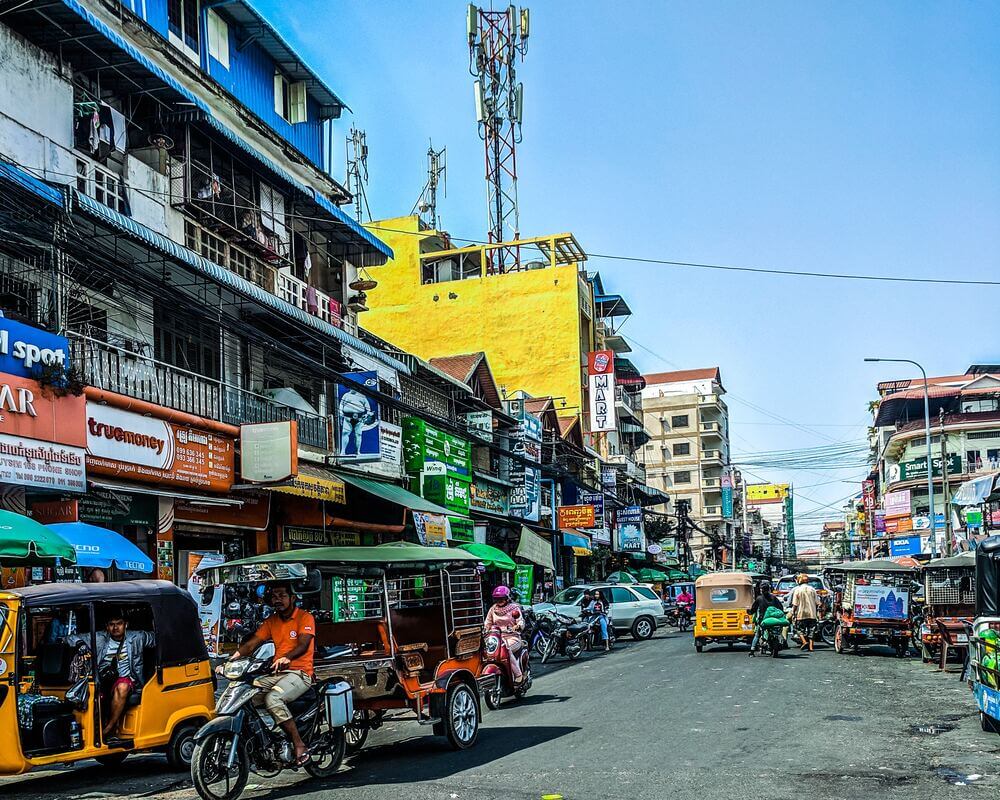
While most people visit the capital as a gateway to reach Siam Reap or head to the island of Koh Rong, there’s no shortage of attractions in Phnom Penh that make it a worthy stop on anyone’s trip to Cambodia.
In this guide, we’ll show you what to do in Phnom Penh, from visiting iconic landmarks like the Royal Palace and the Killing Fields, to sampling traditional Khmer cuisine at local markets.
So grab a pen and paper, and jot these unmissable places down.
Is Phnom Penh Worth Visiting?
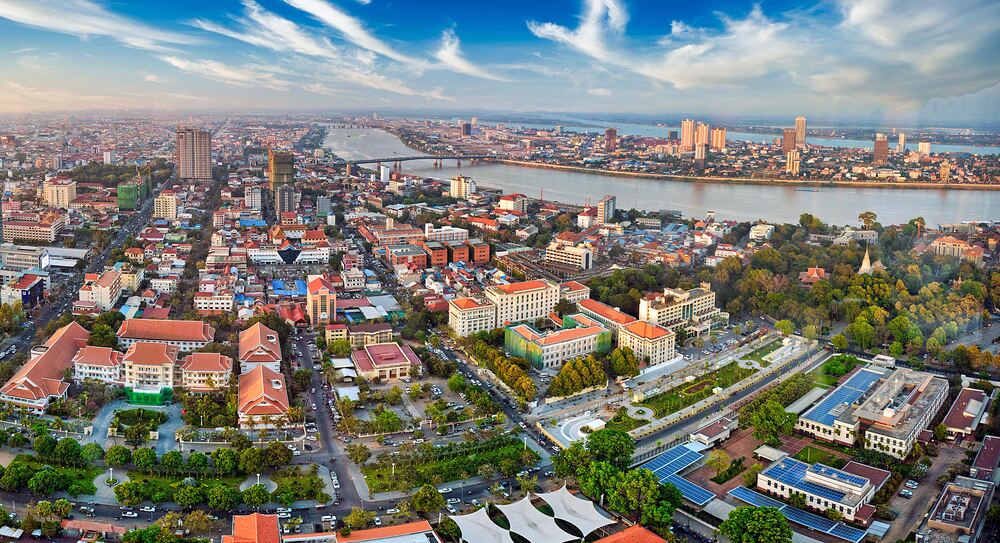
But first, is Phnom Penh worth visiting? I mentioned earlier that it’s only a whistle stop for many travelers who just stop by on their way to Angkor Wat in Siem Reap, but in my opinion, it’s definitely worth visiting and shouldn’t be overseen.
Phnom Penh today is almost unrecognizable to the Phnom Penh of 10 years ago, when people still lived in traditional wooden houses, rice paddies lined the river, and UN vehicles roamed the dirt tracks trying to bring peace to a country after 30 years of conflict.
Today there are decent roads, modern bars and restaurants, shopping malls, a numerous amount of high-rise buildings, and many historical sights. Phnom Penh is a city on the up.
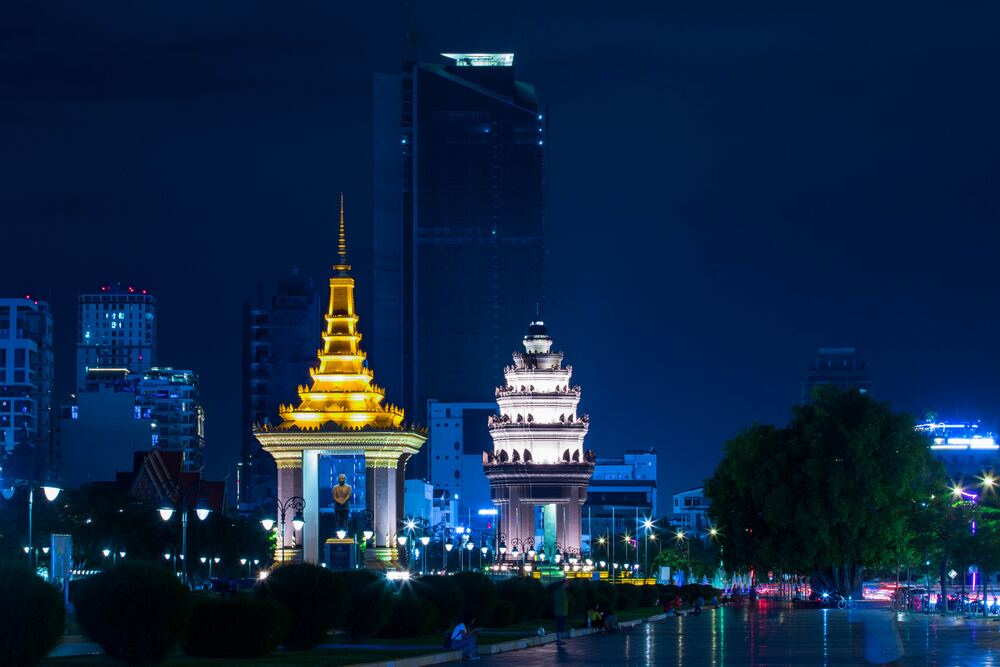
For me it is not just the sights though. For me Phnom Penh is all about the people, the atmosphere and pace of life. Unlike other Asian cities, such as Bangkok, Phnom Penh is the perfect sized city and much more relaxing.
If you visit Cambodia come and explore Phnom Penh for at least 2 or 3 days, which. is the perfect amount of time to see the highlights and get a feel for the city.
Slow down, take walks, get lost and explore the jewel of Southeast Asia.
Things to Do in Phnom Penh
There’s no shortage of things to do and see here, whether you’re interested in exploring ancient temples or immersing yourself in the local art scene.
Here are some unmissable things not to miss!
1. Visit The Tuol Sleng Genocide Museum (S21 Prison)
To really understand Cambodia as a country, its culture and people I really recommend learning a bit about Cambodia’s tragic past and the genocide during the Khmer Rouge regime in the late 70’s.
The Tuol Sleng Genocide Museum, or Security Prison 21 (S-21), in Phnom Penh, is a former high school that used to be one of the most brutal re-education camps in Cambodia, where thousands of people got killed and tortured.
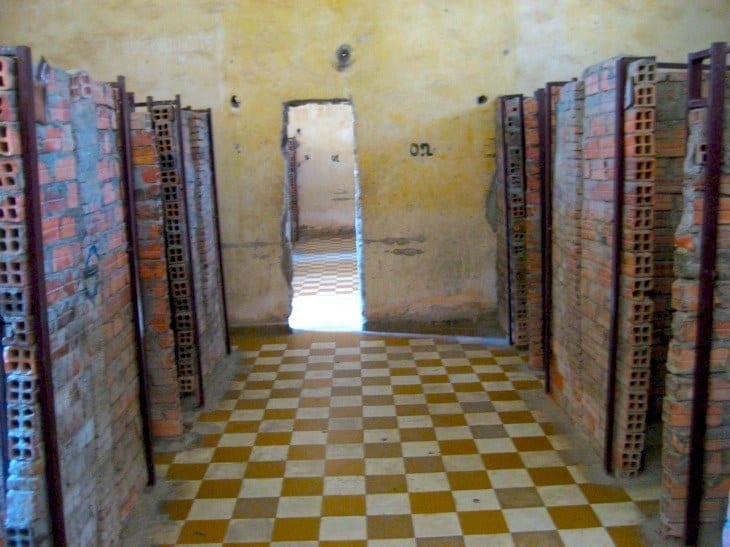
Most prisoners were then bought to the Killing Fields just outside of Phnom Penh.
Both sights are heartbreaking and a lot of visitors can’t take it, as the brutality of the regime is portrayed in so much detail. There is even a man who sometimes visits this prison, who was once captured and kept in the prison by the Khmer Rouge.
He shares his story of torture and torment to visitors who are interested in hearing it.
Although it’s sad, I think it is important to remind people about what happened here to make sure that these things will never happen again, especially as for the Cambodian people it was their recent ancestors who endured this.
2. Check Out The Royal Palace and Silver Pagoda
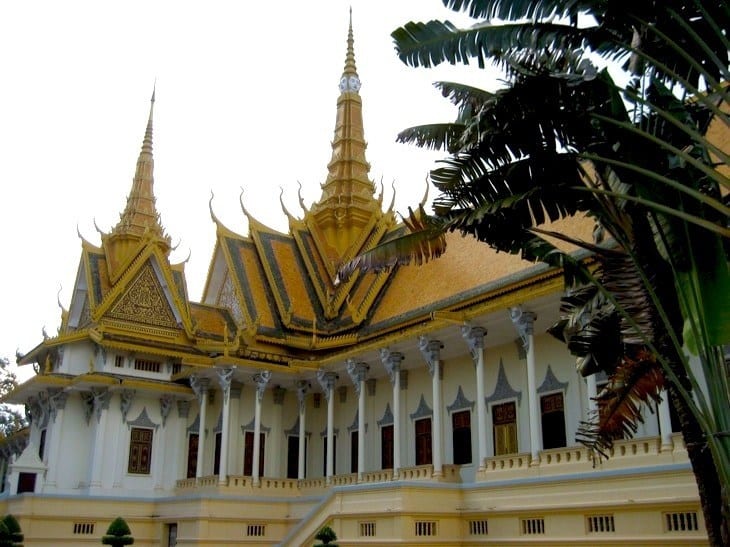
A more cheerful sight is the Royal Palace, which is a stark contrast to Phnom Penh’s dusty streets with its manicured gardens and golden buildings.
It is a beautiful complex with lots of impressive Khmer architecture to explore. It’s the official residence of the Cambodian King and is a site of sacred importance, so cover your shoulders and knees before visiting, as you can’t get in otherwise.
Be sure to check out the Silver Pagoda, also known as Pagoda of the Emerald Buddha (Wat Preah Keo Morakot).
It’s famous for its silver tiles which decorate the floor and silver stupas on either side, which are said to contain the cremated bodies of former kings.
3. Go Temple Hopping
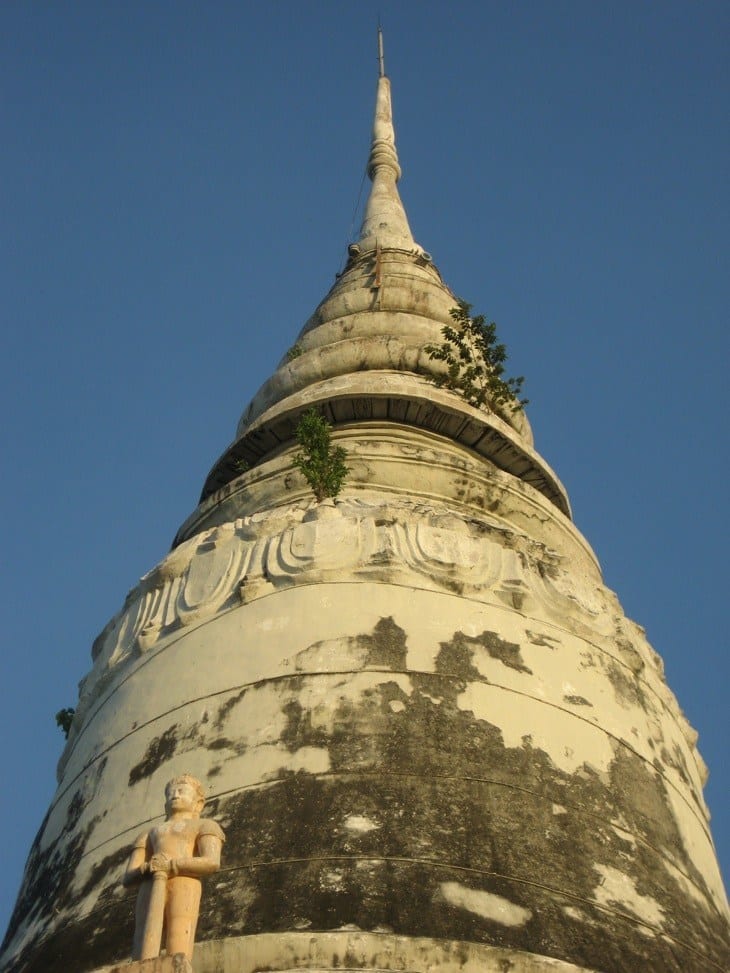
There are also a number of beautiful buddhist temples (or wats) scattered around Phnom Penh, which are all worth seeing.
You won’t find many tourists visiting these temples, so most of the time you will have them all to yourself. The most famous one is Wat Phnom, where Phnom Penh was allegedly founded in 1422.
Other temples really worth seeing for their architectural delights are Wat Lanka, Wat Ounalom, and Wat Botum.
If you visit any temples make sure to take off your shoes before you enter, cover your shoulders and knees and never point your foot soles at anyone, especially not the Buddha statues.
4. Take a Stroll Along the Riverfront
My favourite neighbourhood for exploring is the riverfront, which is lovely for a stroll, but also great to grab a bite to eat, enjoy a cold drink and visit some local markets, such as the old market (phsar chas) in the old French quarter.
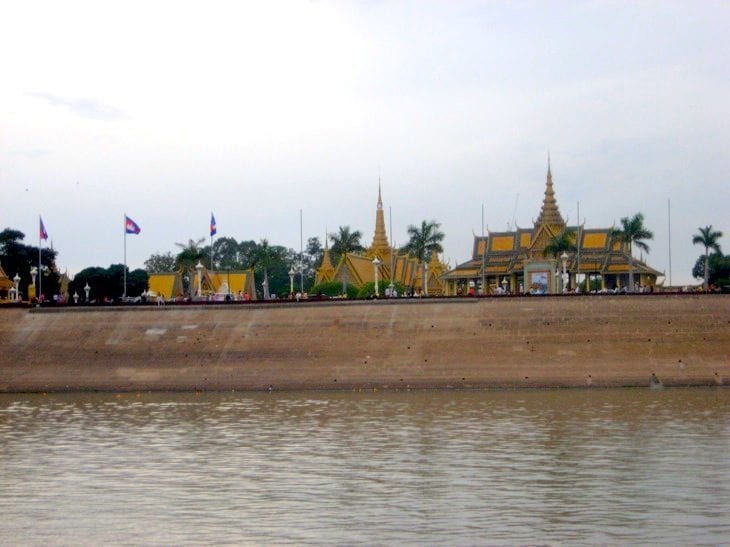
spot for people watching
It is always busy with locals and tourists alike and if you fancy getting active you can even join one of the outdoor aerobic sessions with the locals for $0.25.
5. Try Khmer Food
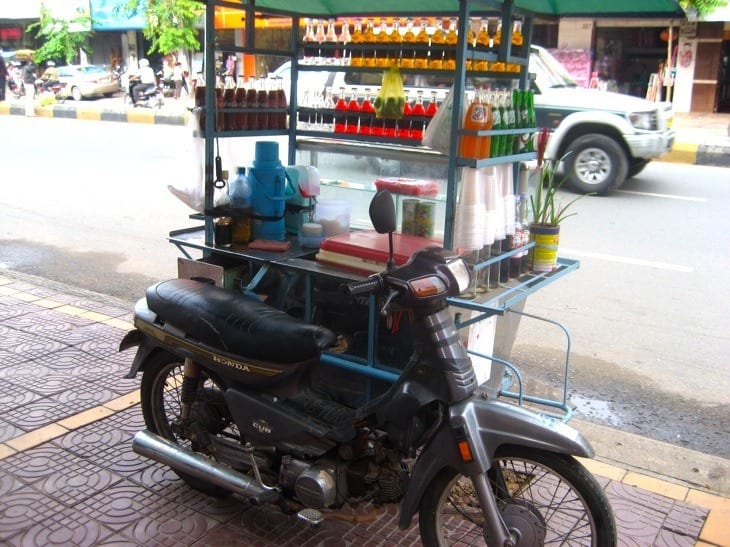
Khmer food is not very well known outside of Cambodia, but it is definitely worth trying.
Street food can be found everywhere in Phnom Penh, as vendors have mobile kitchens attached to their motorbikes and so are able to prepare food anywhere they stop.
It is delicious and really cheap where dishes often only costs $1.
If you are thirsty make sure to try delicious Khmer ice coffee, fresh sugarcane juice with lime or fresh coconut juice, all available from mobile drink carts for roughly $0.50.
If you are a vegetarian I highly recommend K’nyay Restaurant, which offers vegan and vegetarian cuisine and unusual local specialties, such as jackfruit or banana curries.
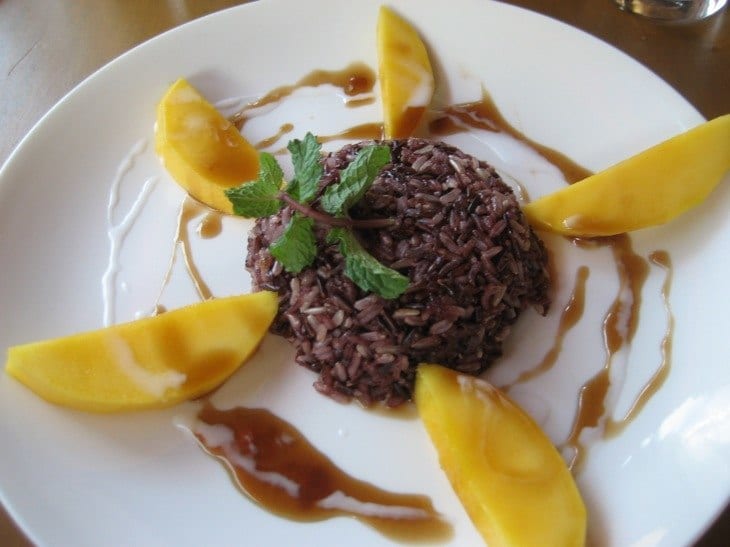
My favourite restaurant has got to be Samaky Restaurant though. Samaky is a social enterprise that trains street children in the catering business and teaches them English.
I have never seen more friendly staff in any other restaurant and by eating there you support a really good cause as well.
I recommend the national dish Fish Amok, and sweet and sticky rice with mangoes.
6. Enjoy Phnom Pehn’s Vibrant Nightlife
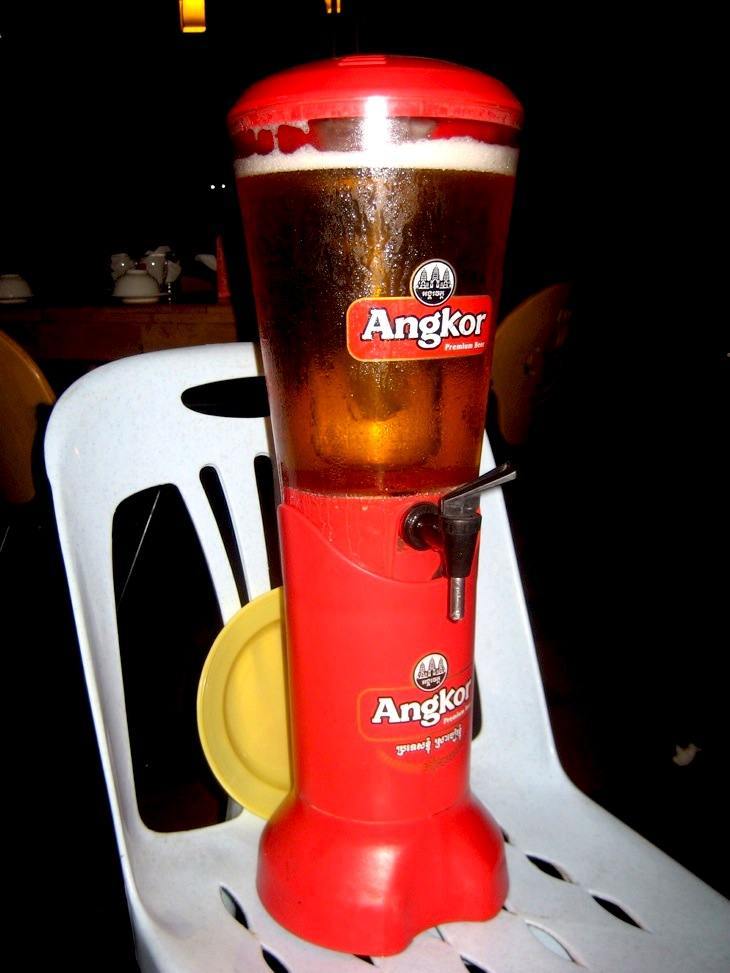
As Phnom Penh has a large expat community there are plenty of bars scattered around Phnom Penh.
Most of them have happy hours where a glass of ice-cold Angkor beer will usually cost you $0.75, and a cocktail $2. Most bars are down the riverfront, on street 278 or 51. You will be spoiled for choice.
If you prefer drinking with the locals you can try out one of the plentiful Khmer beer gardens, where a pitcher of beer will cost you around $1.5. Be repared for some karaoke though.
Best Place for a Night on the Town in Phnom Penh
No visit to Phnom Penh is completed without a visit to the famous Foreign Correspondence Club (FCC).
The FCC is a very historic building, as it was here where the war correspondents filed their breaking stories in the early days of the Khmer Rouge regime, until they were all forced to leave the country.
Its rooftop bar offers beautiful views over the riverside. The food is delicious, but a bit more on the pricy side. There is also regular live music.
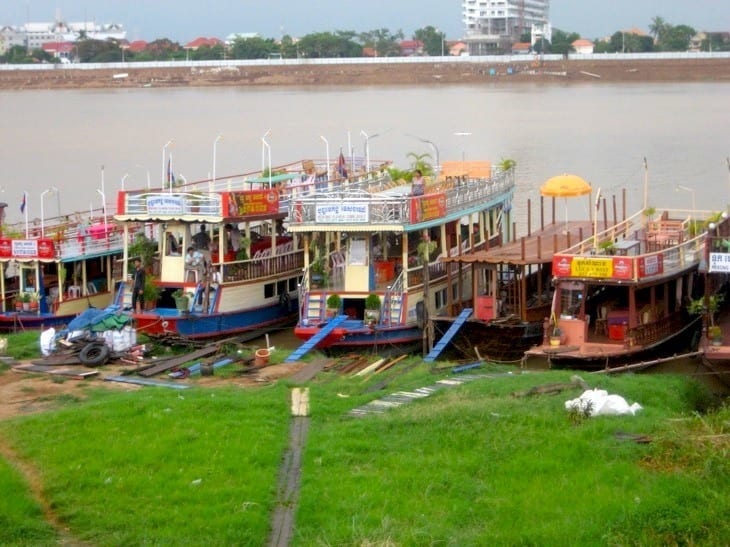
If you want to party in a private space you can rent one of the many boats along the river which can host up to 50 people.
Costs are around $20 for a 2-hour cruise and you can bring your own drinks and food. The boat takes you down both the Mekong river and the Tonle Sap – very relaxing way to spend your night.
7. Watch a Traditional Cambodian Apsara Dance
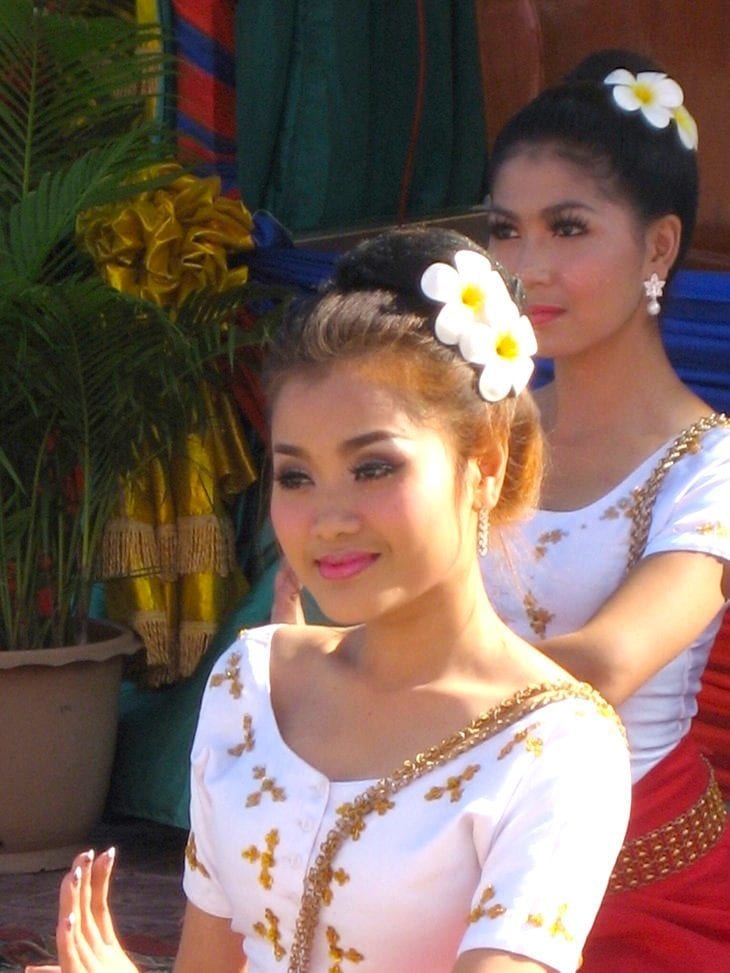
If you would like to see some traditional Cambodian dancing I recommend the Chaktomuk Theatre on Sisowath Quay where you can see the Apsara Dance and some very elaborate costumes.
8. Visit the local markets
There are three markets where you can buy souvenirs.
- The biggest is the Russian Market on Street 163, which sells everything from souvenirs, to engine parts, antiques or fresh food.
- The Central Market on Street 128 is a beautiful art deco building, but sells similar products to the Russian market, but is a bit smaller.
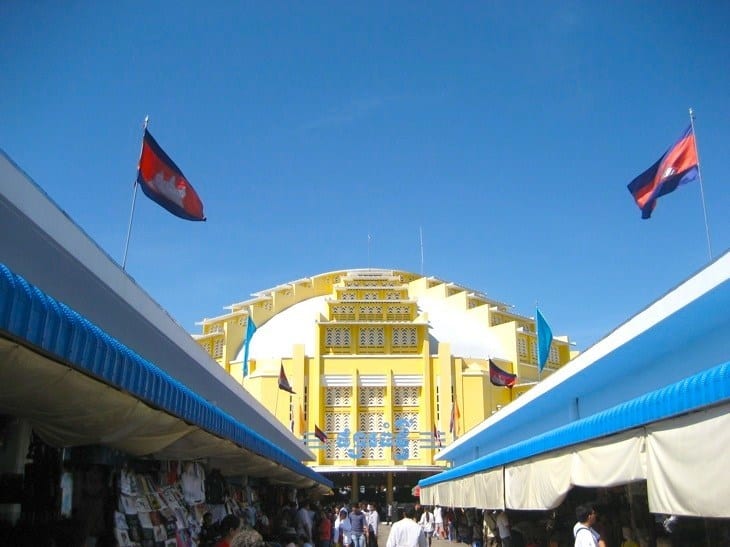
- The Phnom Penh Night Market on the riverfront at the corner of Street 108 is open on Friday and Saturday nights. It is a great place to sample some street food and to buy souvenirs.
Haggling is a must on all three markets to get the best deal. If you are into art and handicrafts in particular I recommend a visit to Street 178 where galleries and workshops line the street opposite the University of Arts.
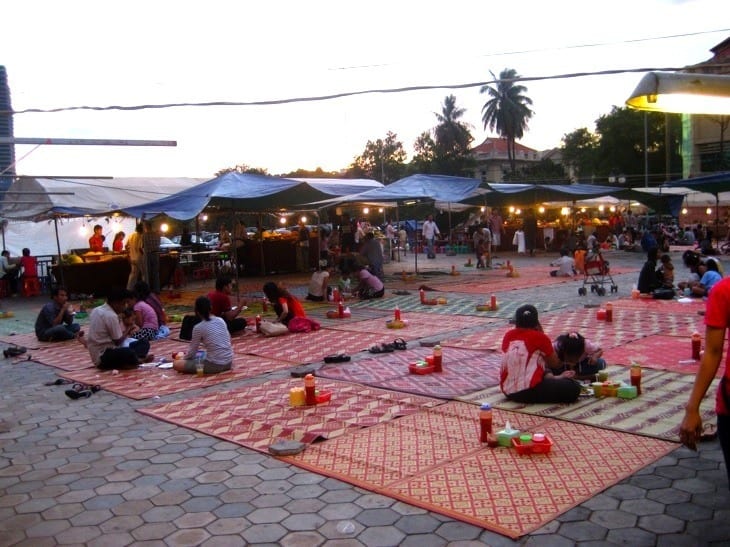
9. Check out the Water Festival in October
The biggest event each year is the Water Festival in October.
The 3-day festival is of great significance as it celebrates the end of the rainy season, the start of the fishing season, and also the unique natural phenomenon – the flow of the Tonle Sap river changing direction!
Many villagers throughout the country spend almost a full year preparing their villages boat for the famous boat races. These are elaborately and brightly decorated dug out canoes with large eyes on the prows to ward off evil spirits.
10. Witness the Royal Ploughing Ceremony
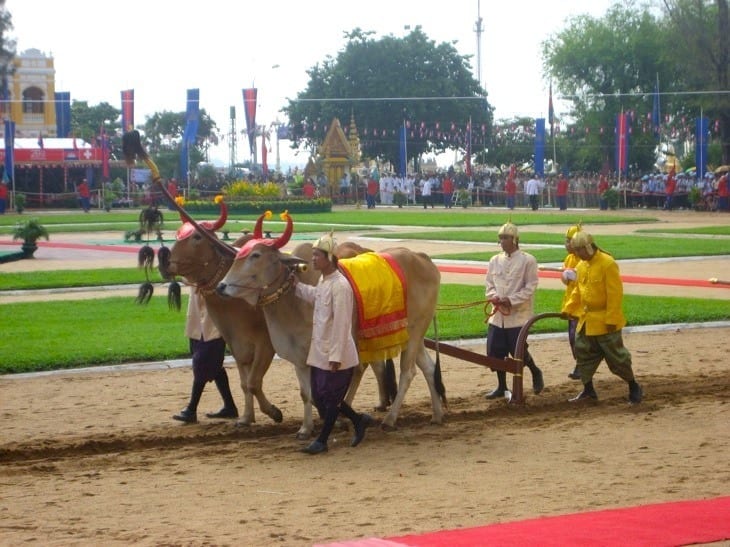
Another big event is the Royal Ploughing Ceremony, which marks the beginning of the rainy and rice growing season.
The Royal family is usually involved and you will be able to see parades on the grounds of the National Museum, Buddhist rituals, marching bands and the actual ploughing ceremony where two royal oxens plough the ground and are then offered a varierty of foods and spirits.
Depending on what the oxen chooses to eat is a sign for a good or bad harvest.
11. Take a Day Trip to Tonle Bati
I would really recommend a visit to Tonle Bati and its nearby Angkorian temple ruin Ta Prom. Tonle Bati is a lake where locals often come for the weekend to have a picnic by the lake, go for a boat ride or a dip in the cool water.
Whilst I wouldn’t recommend swimming in the lake for health reasons, the picnic areas by the lake are the perfect spot to relax in a hammock and eat snacks provided by the various street vendors or restaurants.
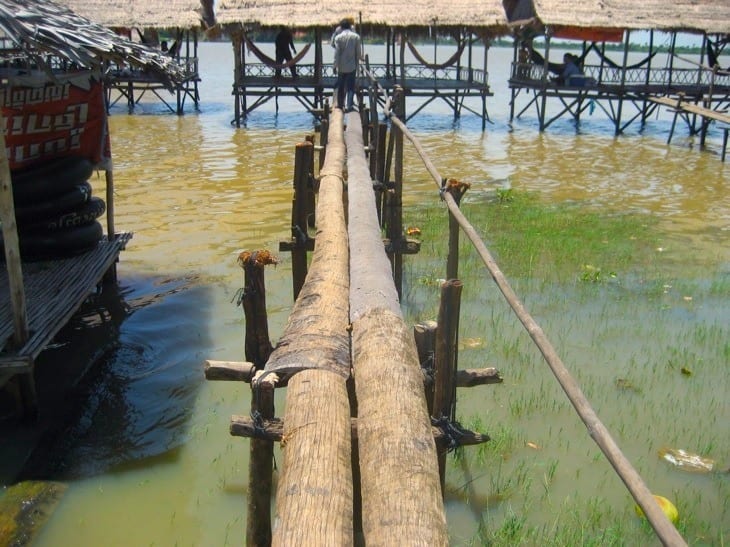
A few minutes away from the lake is the Ta Prohm ruin, which dates back to the late 12th century. Whilst you get bigger ruins in the Angkor Wat temple complex in Siem Reap, you will have this ruin all to yourself for a true Tomb Raider experience.
You can get there by booking private cars via tour operators or negotiate a deal with any tuk tuk driver in town. It takes about 1 hour in a car and 1.5 hours in a tuk tuk. Expect to pay about around $30 for either mode of transport.
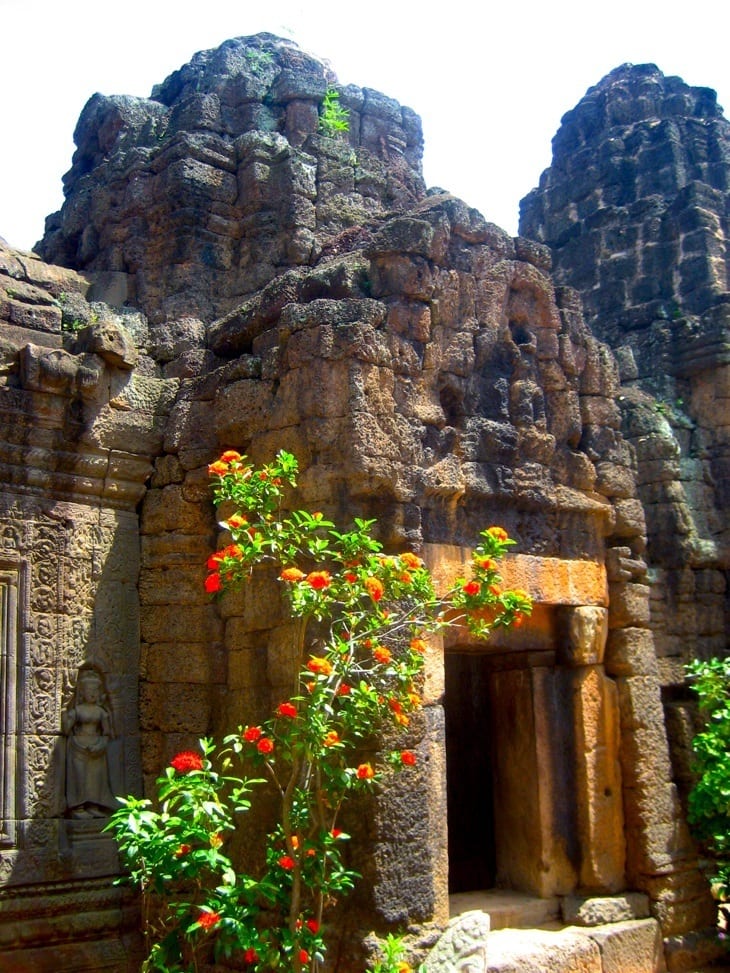
12. Take a Day Trip to Oudong
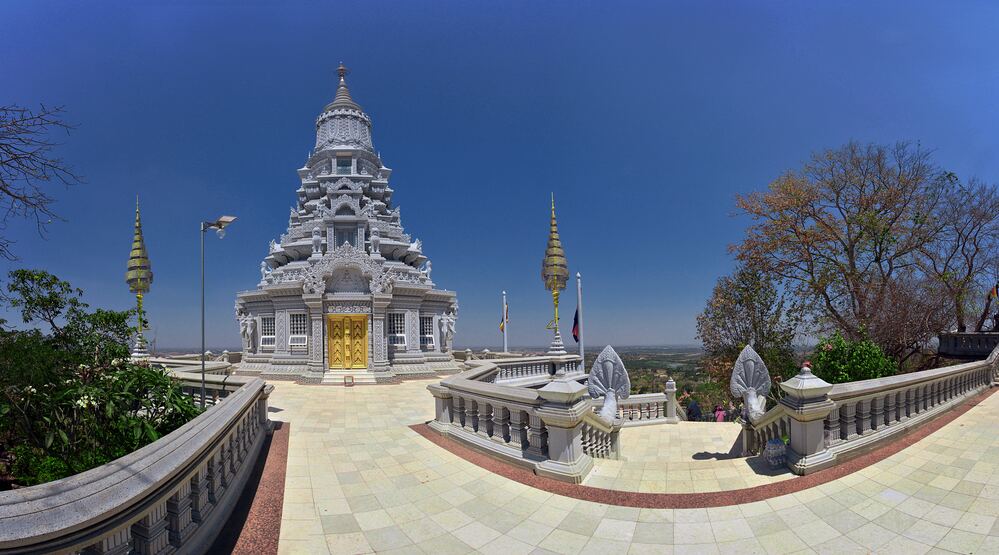
I have already mentioned Tonle Bati above, but there is also another place that is easily reachable for a half-day trip, which is Oudong.
Oudong has been Cambodia’s former capital until Phnom Penh became the new capital in 1866. It is now the official resting place of the most sacred of Buddha’s bones possessed by Cambodia. The bones are in a temple on top of a mountain.
After a 10 to 20 minute climb from the base of the mountain you will be able to witness a wonderful view down to the surrounding Wats, rice fields and floodplains. You can get there via tuk tuk or booking a tour with a tour operator for roughly $30.
13. Visit Phnom Tamao Wildlife Rescue Center
If you’re an animal lover visiting Phnom Penh, a visit to the Tamao Wildlife Rescue Center, owned by the Wildlife Alliance, is an absolute must.
This incredible sanctuary is home to over 1,200 animals, many of which have been rescued from the illegal wildlife trade or from habitats that were threatened by development.
At Tamao, visitors can get up close and personal with a wide variety of animals, including tigers, elephants, bears, gibbons, and more.
You’ll learn about the incredible work being done to rehabilitate these amazing creatures and preserve their natural habitats.
Not only is a visit to Tamao a great way to meet the native wildlife of Cambodia, but it’s also a great way to support the important work of wildlife conservation.
By visiting the center and learning about these incredible animals, you’ll be helping to raise awareness and encourage others to take action to protect endangered species.
14. Pay Respects at the Choeung Ek Genocidal Center (Killing Fields)
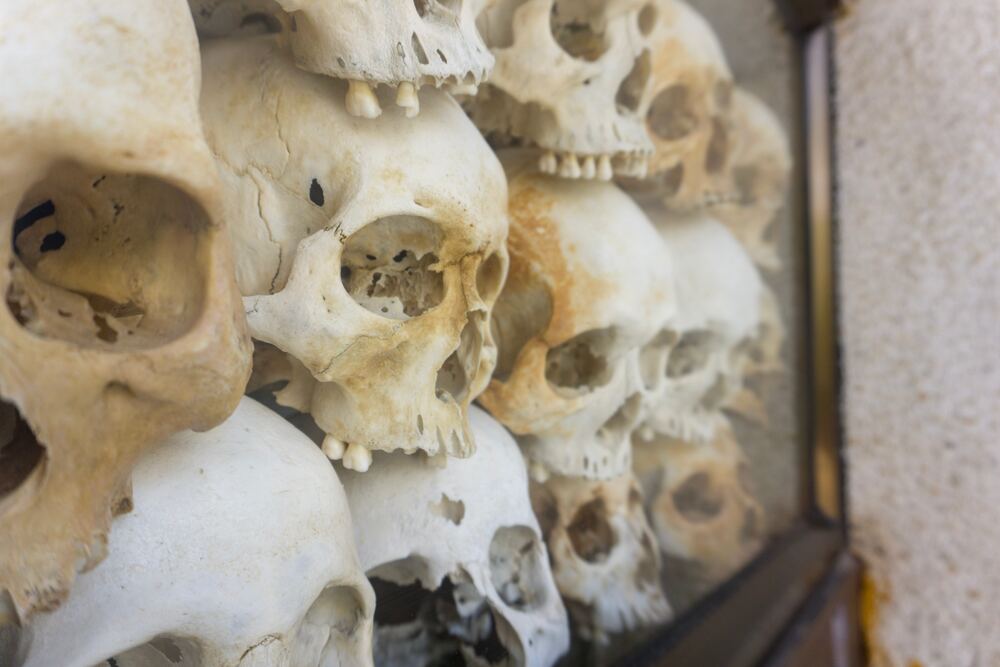
While not the most cheerful of places to visit in Phnom Penh, a visit to the Choeung Ek Genocidal Center is an incredibly important and sobering experience and should not be missed.
This site is one of the most significant memorials to the victims of the Khmer Rouge regime, which ruled Cambodia from 1975 to 1979 and oversaw the deaths of approximately 1.5 – 3 million people.
The Killing Fields, as they’re commonly known, are a testament to the atrocities committed during this dark period of Cambodian history.
You can walk past the mass graves and see areas that were used for torture. Be sure to get the audio guide for information. It’s very well informed and detailed, and allows visitors to learn about the horrors that took place here and pay their respects to the victims.
While it may not be the easiest or most uplifting experience, a visit to the Choeung Ek Genocidal Center is an important reminder of the dangers of totalitarianism and the importance of never forgetting the tragedies of the past.
15. See Beautiful Art at the National Museum of Cambodia
The National Museum of Cambodia is a stunning museum that’s home to the world’s largest collection of Khmer art and artifacts, including sculptures, ceramics, and textiles from throughout Cambodia’s rich history.
You can explore exhibits that span from the prehistoric era to the modern day, with a particular focus on the Angkor period between the 9th and 15th centuries.
You’ll learn about the ancient Khmer civilization and the incredible art and architecture they created, as well as the challenges they faced over the centuries.
What sets the National Museum of Cambodia apart is not just the incredible collection on display, but also the stunning building in which it’s housed.
The museum’s architecture was inspired by traditional Khmer design, with a beautiful central courtyard lined with galleries.
16. Head Over to Koh Dach (Silk Island) And Learn About Silk Weaving
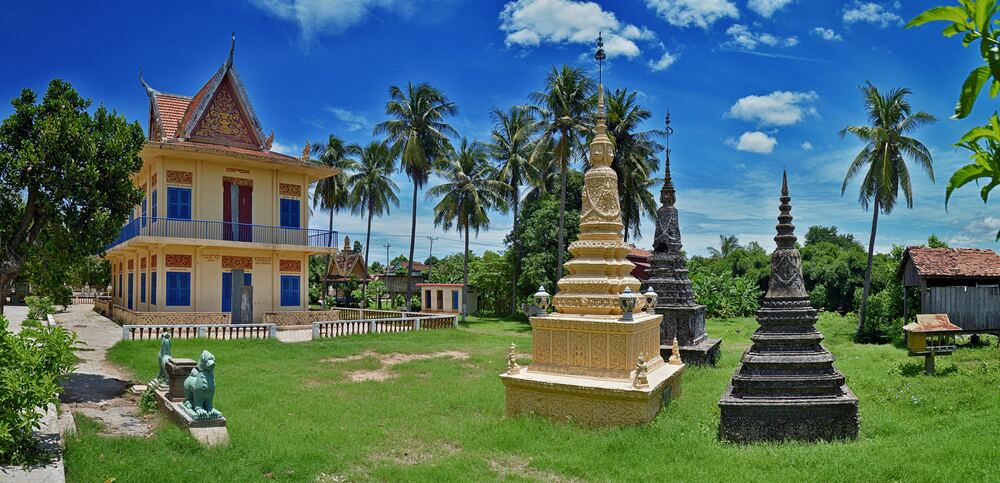
A wonderful escape from the hustle and bustle of the city is to Silk Island.
This small island in the middle of the Mekong River is known for its beautiful scenery, traditional weaving practices, and tranquil atmosphere.
You can explore local villages and learn about the silk weaving process, which has been passed down through generations.
You can watch skilled weavers creating intricate patterns on traditional looms and even purchase beautiful, handmade silk products to take home as souvenirs.
Koh Dach is also a great place to relax and unwind. The island is home to several quiet beaches and scenic spots where you can enjoy the beauty of the Mekong River and the surrounding countryside.
17. See the Magnificent Independence Monument
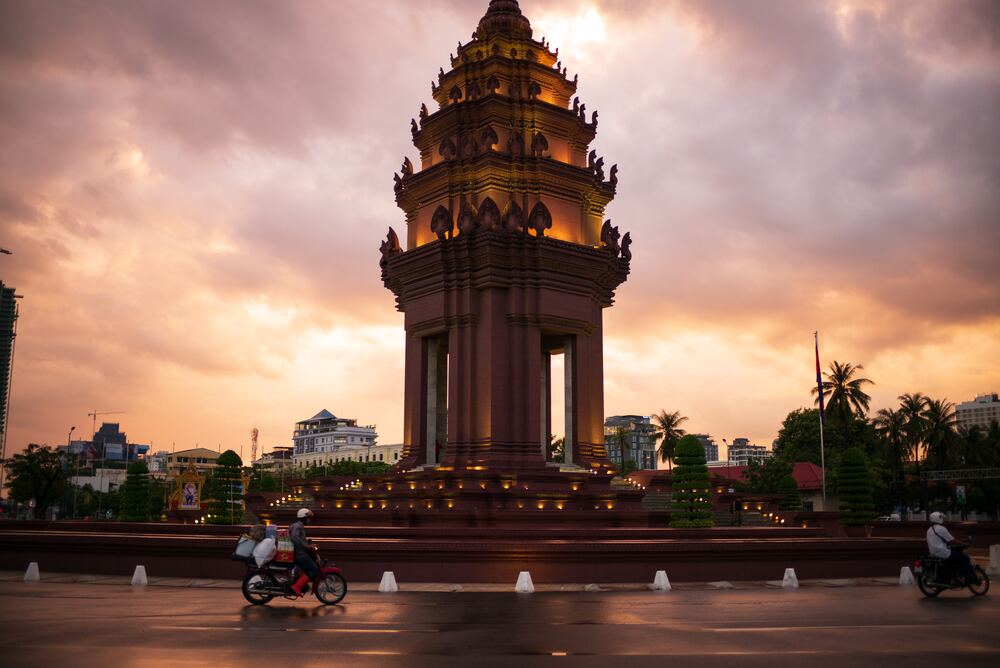
The Independence Monument is one of the most iconic landmarks in Phnom Penh.
This stunning monument was built in 1958 to commemorate Cambodia’s independence from France in 1953.
It features intricate carvings and beautiful architecture inspired by traditional Khmer design.
It’s surrounded by a lush park, which is a popular spot for locals to relax and enjoy the outdoors.
The area around the monument is home to many shops, restaurants, and cafes, making it a great spot to grab a bite to eat or do some souvenir shopping.
Where to Stay in Phnom Penh
There are a lot of cheap guesthouses on the Golden Mile on street 278, called golden mile because most guesthouses have the word golden in their name.
A great modern hotel in an ideal location is Citadines Flatiron Phnom Penh. It has very friendly and helpful staff of the staff and clean and comfortable rooms.
A mid-range hotel I can really recommend is the Hotel 252. It has a swimming pool, which is very refreshing after a hot day of sightseeing. The food is Khmer and Swiss and very delicious.
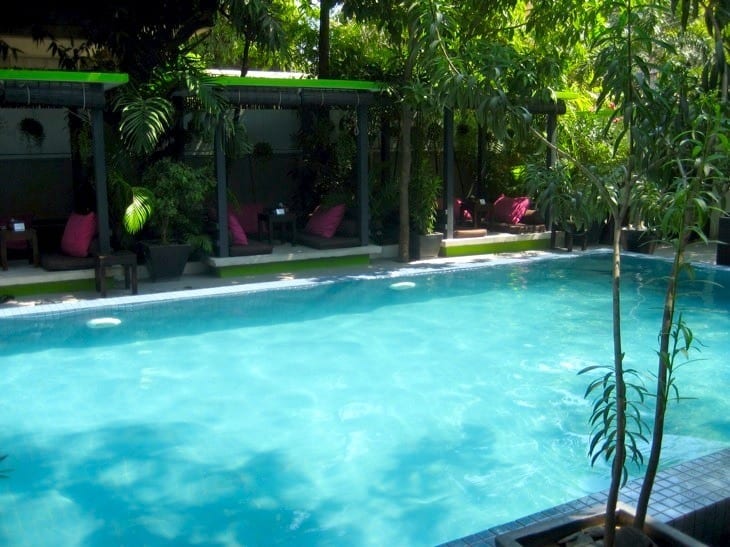
If you are into more upmarket hotels then I can recommend the Raffles Le Royal Hotel, which is simply beautiful in architecture, luxurious, offers delicious high noon teas and also has a great swimming pool.
For more places to stay in Phnom Penh choose from the largest range of hotels, apartments, and guesthouses with our various partners using the map below.
Getting To and Around Phnom Penh
Unfortunately, there are no direct flights from Europe, the US or Australia to Phnom, so you either have to stop in Bangkok, Singapore or Kuala Lumpur.
Air Asia is a popular budget airline in Asia that connects most major cities. There are some pros and cons to Air Asia, but they are very cheap and usually reliable.
Buses are much cheaper, but take a lot longer as well. If you come from Vietnam you can take a bus or boat from Ho Chi Minh City.
The bus trip takes about 6 hours, and is very comfortable. The boat ride takes about 4 hours and is really picturesque as it takes you through the Mekong Delta.
There are also buses available from Bangkok, but they take a whole day with various changes involved. A bus from Pakse/Laos is about 15 hours.
Public Transport in Phnom Pehn
Phnom Penh hasn’t got the luxury of public buses or an underground system that other Asian metropolises have. So to get round you can either take a tuk tuk or a moto taxi.
There are plenty of those around and you won’t be able to walk a meter without being offered a ride. Motos are a bit cheaper, but don’t expect the driver have a helmet for you.
I prefer tuk tuks. They are safe and you get to relax on the comfy seats whilst being able to take in the surrounding sights. Negotiate a price in advance and expect to pay between $2-$4, depending on how far you go.
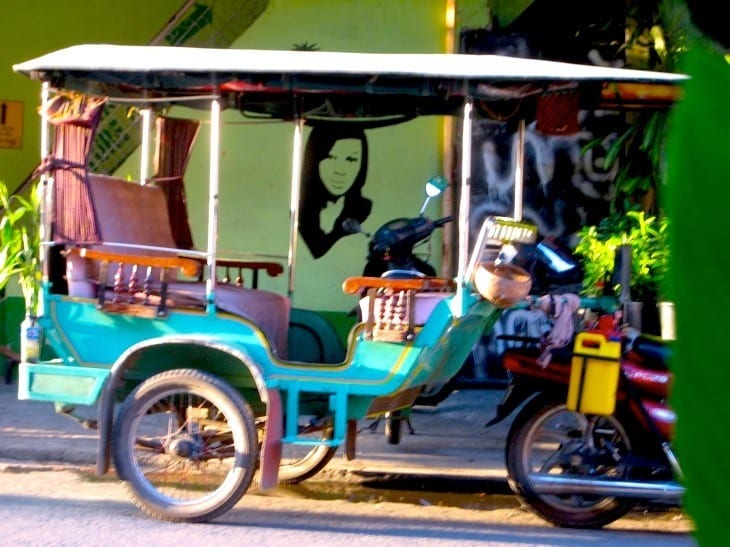
Best Time to Visit Phnom Penh
There are three seasons in Cambodia. The hot season (November to January), the very hot season (February to May) and the rainy season (June to October).
- The average temperature during the hot season is around 32 degrees Celsius, so this is a nice time to visit.
- The very hot season is almost unbearable when it gets as high as 39-42 degrees.
- The rainy season is quite a nice time to visit as well, as the rice paddies are very green and lush and the afternoon rainfalls cool the high temperatures down a little bit.
Before You Go To Phnom Penh
I love Phnom Penh because it’ i’s home to the most amazing and friendly people I have ever met.
They don’t rip you off and locals will always greet you with the biggest smiles you can imagine. I love Phnom Penh because I feel home here.
Popular Tours in Cambodia
BIO – Tammy from Tammy & Chris on the move hails from Germany and is therefore both efficient and punctual. Chris is hailing from the UK, which means he likes to talk about the weather, be polite, or sometimes even at the same time. They both have civil service backgrounds, but have left their bowler-hats back in London and are currently working on justice and human right issues in Cambodia.
Do you have any tips on what to do in Phnom Penh? Share your favorites in the comments.


